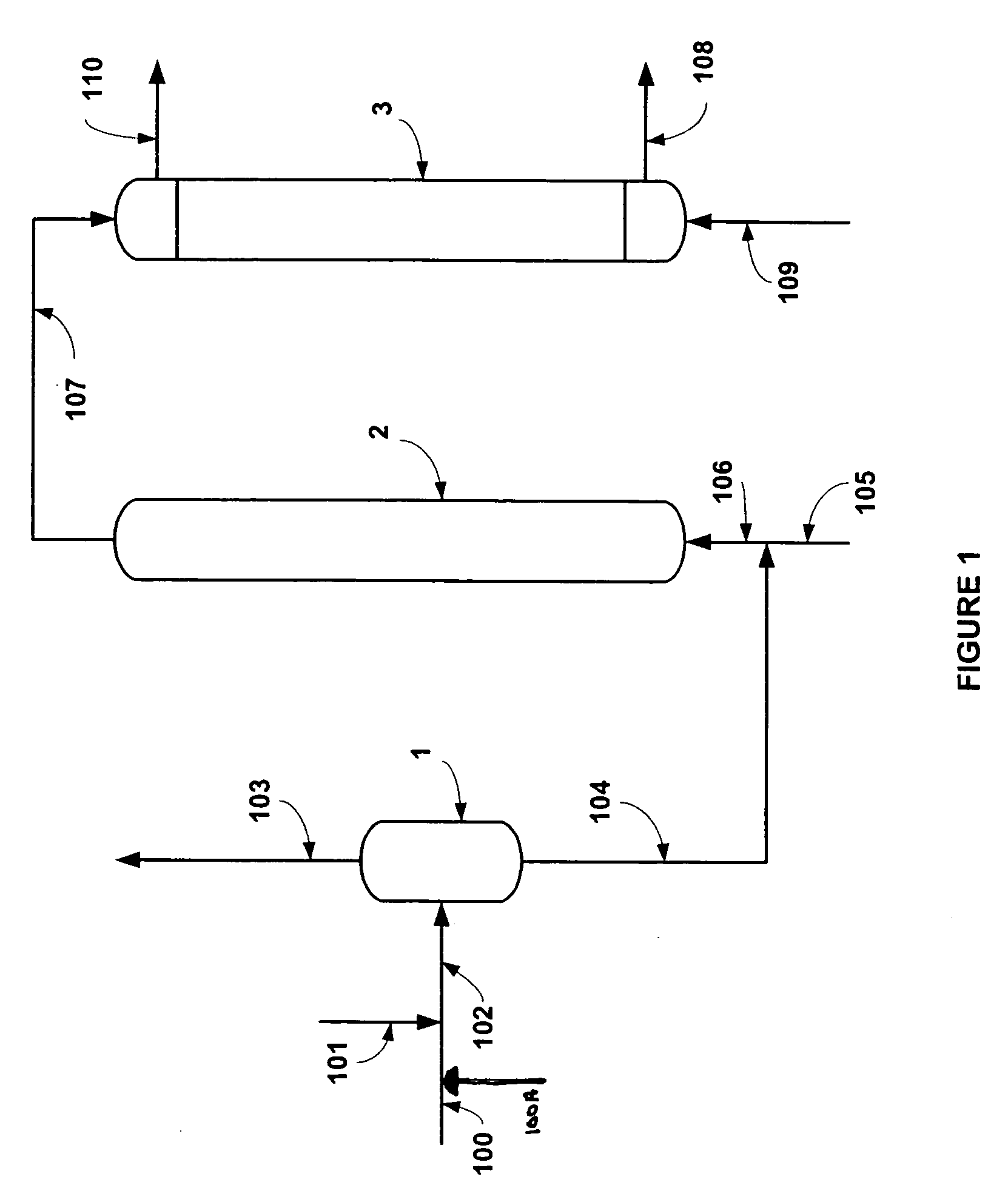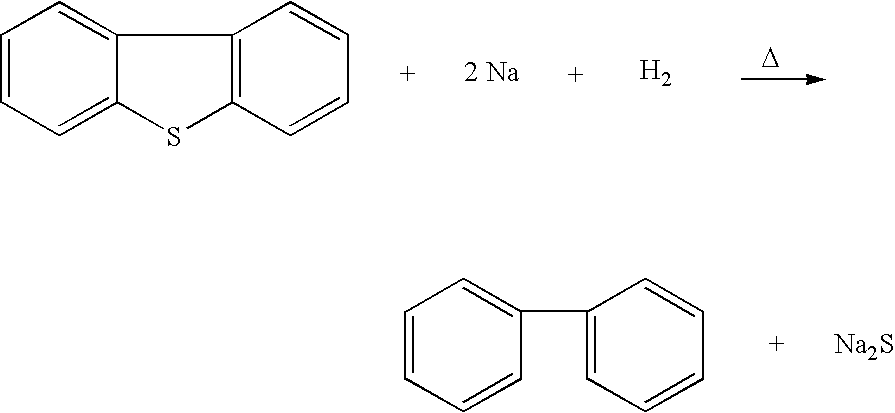Desulfurization of petroleum streams using metallic sodium
a technology of petroleum streams and desulfurization, applied in the direction of sulfur compounds, fuels, metal refining, etc., can solve the problem of not being able to produce extremely small droplets
- Summary
- Abstract
- Description
- Claims
- Application Information
AI Technical Summary
Benefits of technology
Problems solved by technology
Method used
Image
Examples
Embodiment Construction
[0019] The various configurations of this novel hydrocarbon desulfurization process will be understood further with reference to the drawing. In FIG. 1, a liquid feed stream containing organosulfur species is introduced into the system through line 100. Metallic sodium dissolved in a solvent, preferably, liquid anhydrous ammonia. The solvent / sodium solution is introduced into the feed stream through line 101 at a temperature and pressure so that the solvent remains in the liquid phase. A temperature in the range of about 25° C. to the melting point of metallic sodium (97.81° C.) is preferred, but temperatures a low as 0° C. could be employed. For the remainder of the description, we will assume that liquid anhydrous ammonia is the solvent.
[0020] Sodium is well known to be very soluble in liquid ammonia (U. Schindewolf, Angew. Chem. Internat. Edit., Vol. 7 (1968) / No. 3) with solubilities as high as 6 M (approximately 20 wt %) possible. Therefore, the preferred concentration of sodiu...
PUM
| Property | Measurement | Unit |
|---|---|---|
| temperature | aaaaa | aaaaa |
| temperature | aaaaa | aaaaa |
| temperature | aaaaa | aaaaa |
Abstract
Description
Claims
Application Information
 Login to View More
Login to View More - R&D
- Intellectual Property
- Life Sciences
- Materials
- Tech Scout
- Unparalleled Data Quality
- Higher Quality Content
- 60% Fewer Hallucinations
Browse by: Latest US Patents, China's latest patents, Technical Efficacy Thesaurus, Application Domain, Technology Topic, Popular Technical Reports.
© 2025 PatSnap. All rights reserved.Legal|Privacy policy|Modern Slavery Act Transparency Statement|Sitemap|About US| Contact US: help@patsnap.com


